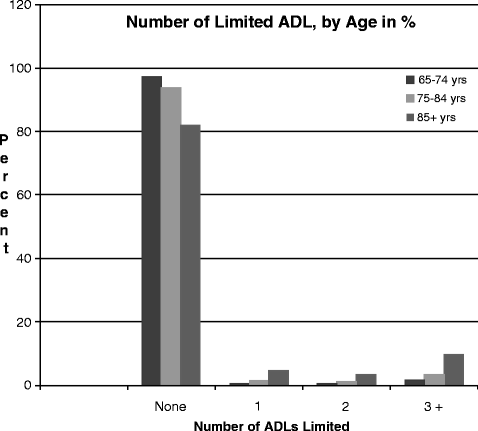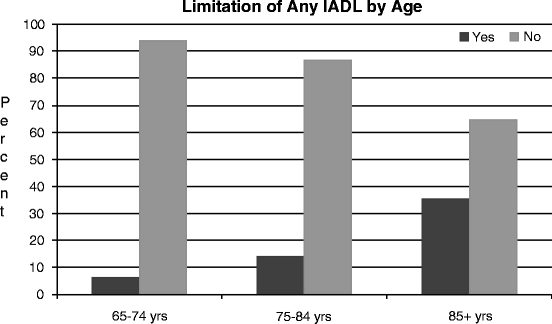Deconditioning
Delirium
Dementia
Falls
Frailty
Malnutrition
Osteoporosis
Palliative/end of life care
Polypharmacy
Pressure ulcers
Transitional care
Urinary incontinence
Several steps must be added to the usual initial history and physical assessment of your geriatric patient that will improve your ability to care for them as you proceed to your management phase. Your first additional step will be to determine the patient’s communication status. Is there evidence or history of decreased hearing or vision? About 60% of older patients have difficulty with one or the other or both senses [3]. What is their medical literacy level? Again, at least 1/4 of patients have a lack of education or basic lack of understanding of common medical terms [4]. And with the growing number of legal or illegal immigrants into the USA, urologists are likely to see many persons from foreign countries with their own specific cultural prejudices regarding medical care. Often, a family member acts as the interpreter—but the patient may not wish to divulge all of their history through that person. Accordingly, your initial record should simply record at the outset these three points: adequacy of senses, medical literacy, and cultural background. Thereafter, if you proceed with various treatment plans you can account for these special needs, e.g., being sure to have hearing aids available in the ICU after surgery.
During acquisition of the history, some special inquiries must be added. One of the most important regards questions about present prescription medications as well as all over-the-counter (OTC) drugs including supplements, vitamins, and herbal/alternative therapies. Many elderly patients use such medications. For example, ingestion of significant amounts of ginseng can lead to bleeding complications [5, 6] (Lesson 33, Penn Chapter). Most older persons take multiple prescription medications. This will be discussed further in Chap. 4.
Additional questions must include the functional capacity of the individual. Can they still stoop, lift, reach, grasp, and walk adequately? About 28% of Medicare patients express some difficulty with these activities [3]. After you have undergone major abdominal surgery, grip strength status may not be recovered even 6 months after surgery in many patients [7]. If these functional abilities are limited before surgery, they will likely never be recovered, and your patient will require help to get the jar off the upper shelf and then open it. Also, many Medicare patients express difficulty with one or more of the ADL [8] (ADL) such as toileting, bathing, eating, dressing, grooming, or (as noted above) walking (Fig. 2.1). A quick ADL assessment will define where help may be needed. If and when discharge plans are to be made, the number of ADL disabilities will help determine the discharge site (See Chap. 7). And finally, one must assess and record the Instrumental Activities of Daily Living [9] (IADL), so named because they require some type of tool or instrument to accomplish them. They are phoning, shopping, cooking, cleaning, laundering, and traveling (Fig. 2.2). For example, can the patient phone the dispatcher to order a cab to go shopping for food and soap? Noting these points may seem onerous, but recording them during your initial encounter will save much time later in your course of care for the patient.



Fig. 2.1
Number of limited activities of daily living by age

Fig. 2.2
Limitation of any instrumental activities of daily living by age
Estimating and maintaining functional status for your patient becomes one of the most critical portions of your geriatric care. In the past, Forciea and I [5] have indicated that “No element of the preoperative examination of the older patient is more predictive of perioperative morbidity and mortality than functional ability.” If, for example, you doubt the patient’s ability to “get about,” you can easily include a brief “Get-Up-and-Go” test [10] into your office activities (Table 2.2). This might take one of your office staff 2–3 min, but doing so will save you many hours if your patient cannot ambulate after surgery [11, 12].
Table 2.2
Get-up-and-go test
Patient sitting in chair |
Stand without using arms for boost or support |
Walk 10 ft, turn around and return to chair |
Sit without using arms for support |
Some prefer to time test: if time <15 s test is good [11] |
As you go through these prior points in acquiring the history, you will be making observations about the patient’s mental status and likely competency. At some point you may begin to question the patient’s mental state or the companion/caregiver may mention concern about the patient’s mental ability. Two simple helps can be applied. First, the Mini-Mental Status examination can be done [13] (again by your trained office staff) (Table 2.3). It is available in GAYF also. If this suggests problems, you may want to request additional geriatric and/or psychiatric examinations. Second, it you question the patient’s understanding of your descriptions of their problem or of your treatment plan, it is helpful to use the “repeat back” system. This requires that the patient “repeat back” to you so that you can understand what you have offered [14]. If you judge that the “repeat back” is adequate, it is useful to enter into the record your written confirming note. Then the patient and possible companion can sign along with you (this is still possible during these days of electronic records). If the above two processes create for you continued concern in the absence of a spouse or guardian, then it is advisable to determine whether someone is or could be created as a guardian for your patient. Every county in the USA has an office on aging that your patient’s family or companion can contact for advice on this subject. Their office names may be unusual. As an example, for Philadelphia, the office is titled the “Philadelphia Corporation for Aging,” but services for the elderly are available.
Table 2.3
Mini-mental status evaluation (GAYF)
1.With patient’s attention, mention three unrelated words that are to be remembered |
2.Ask the patient to draw a clock face with a specific time, such as 8:20 |
3.Then have the patient repeat the three words in 1. Above |
About 1/3 of all elderly patients who present with an urgent or emergent problem will manifest some degree of malnutrition [15]. As we all know, these patients heal poorly, have poor immune response, and encounter many more postoperative complications. Some initial hints may appear: weight loss of >10 lb in the past 6 months, body-mass-index (BMI) of under 22 or serum albumen of less than 3.0 on multi-test chemical panel (GAYF). Treatments by means of intravenous alimentation and so forth may result in some improvement [16]. If time allows, the production of improved nutrition in conjunction with a trained dietician provides the best resolution. However, if intervention is urgent, one must caution the family/friends that the risk is much higher for that patient. Under-nutrition, for example, clearly enhances the likelihood of pressure ulcers [17].
< div class='tao-gold-member'>
Only gold members can continue reading. Log In or Register to continue








